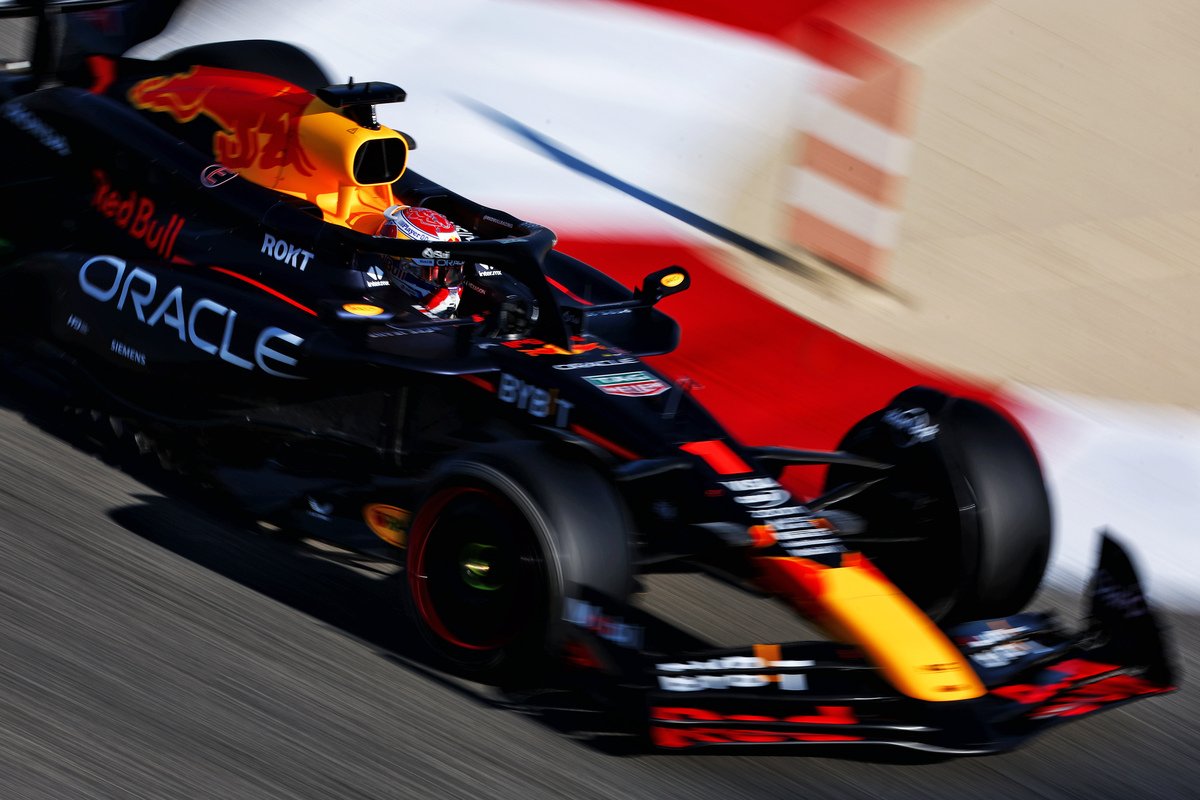

Questions surrounding the common ownership of Red Bull Racing and RB, as well as the technical relationship between those two and others on the grid, has rivals concerned.
After decades of carefully crafting rules to ensure the mere survival of teams, the sport has rapidly been transformed and teams are in a stable if not buoyant financial position.
The racing is closer than it has ever been, a product of deliberately prescriptive rules, while financial regulations have done a huge amount to level the playing field. F1 is booming.
That transformation has been so rapid, however, that some regulations have not kept up.
Where once it was appropriate to help the smaller teams save money, nine of the 10 teams are now believed to be running at the cost cap.
The argument in favour of supporting the smaller teams to survive therefore carries little weight.
That’s doubly so when one considers buying components in comes at a pre-determined cost within the financial regulations, with suggestions it costs more to do so than developing them in-house.
However, putting the technical elements of the current regulations aside, a related issue also warrants being addressed.
That is the transfer of staff between ‘related’ organisations.
Knowledge is power in Formula 1 and the likes of Adrian Newey, Dan Fallows, and others are targets for rivals because of their expertise.
In Newey’s case, should he ever decide to leave Red Bull Racing, it would be prudent of the Milton Keynes operation to place him on gardening leave.
He would be paid to sit on the sidelines, divorced from the latest developments and progress within Red Bull Racing’s design office save he take that knowledge to his new employer.
However, imagine the destination was RB rather than Ferrari. Would Red Bull Racing be so averse to the move? Would it place Newey on gardening leave to prevent the transfer of its intellectual property?
There is strong evidence to suggest not. And that raises a problem.
Red Bull Racing and RB have a common owner, Red Bull. It is in the broader interests of the drinks company both its teams be competitive.
By allowing the easy transfer of staff from Milton Keynes to Faenza, the latter can benefit from the knowledge gained by that individual in their former role.
It’s against the regulations to take drawings and such, and there’s no suggestion that has happened, but an easy way to bolster a team’s technical strength is to transfer ideas.
That cannot be policed and is where the situation can be exploited.
Common ownership opens the door for one team to be used as a test bed for the other.
Rather than spending money out of one team’s development budget, the secondary operation can develop and test concepts, with that knowledge finding its way back to the parent team through a staff member that was loaned out.
There are four teams on the grid, two pairs, where this scenario could play out easily, though other technical relationships exist.
In theory, the practice of freely transferring staff from one team to another is already outlawed under the Technical Regulations.
Article 17.2.4 of the rules state: “No Competitor may use movement of personnel (whether employee, consultant, contractor, secondee or any other type of permanent or temporary personnel) with another Competitor, either directly or via an external entity, for the purpose of circumventing the requirements of this Article 17.”
The broader Article 17 essentially defines what is considered a ‘constructor’ under the regulations.
And yet there are examples of rapid staff transfer between related teams which suggests that rule is not being enforced.
At Haas, its former technical director, Simone Resta, was seconded from Ferrari.
Resta had been head of chassis engineering at Ferrari from November 2019 until December of the following year. He joined Haas as technical director in January 2021, with his new office overlooking Turn 6 at Ferrari’s Fiorano test track.
There are more recent examples too.
According to LinkedIn, Nick Roberts joined RB as senior strategy engineer this month, having been senior race strategy analyst at Red Bull Racing.
Guillaume Cattelani, formerly McLaren’s head of aerodynamics who was chief engineer of technology and analysis tools at Red Bull Racing from June 2020 to January 2024 is now deputy technical director at RB. A job he started last month.
Haas and Ferrari have a deep technical relationship while Red Bull Racing and RB have common ownership.
McLaren has no such ties to rival teams, meaning when it hired David Sanchez from Ferrari, it was forced to wait the better part of a year for him to join.
The same with Rob Marshall arriving in Woking from Red Bull Racing.
There is no suggestion that Cattelani or Roberts have done anything wrong, nor have Red Bull Racing and RB, for that matter.
However, it is entirely plausible that both have recent knowledge of Red Bull Racing that can be used to benefit RB within the regulations.
Had Cattelani or Roberts moved to any other team, there would almost certainly have been a far longer period where they’d have been sidelined to eliminate exactly that possibility.
Therein lies the issue and explains why confidence in the regulations is low throughout the paddock, not just at McLaren where Zak Brown has been especially vocal.
It is worth noting that this issue isn’t unique to Formula 1 and has been addressed multiple times over the decades, especially in football.
In mid-1999 the Court of Arbitration for Sport (CAS) published its decision over the common ownership of AEK Athens and SK Slavia Prague.
Both clubs had qualified for European competition in 1998 with AEK Athens prohibited from participating due to UEFA’s Common Ownership Rule.
In short, CAS upheld UEFA’s decision which was supported by the European Commission when it was appealed, noting that the common ownership rule was designed to protect the integrity of the competition and “ensure the uncertainty of outcome and to guarantee that the consumer has the perception that games played represent honest sporting competition between the participants”.
With the competition in F1 closer than it has ever been, small gains can net significant returns, while teams are incentivised to find loopholes to gain an advantage – it’s the very nature of F1.
Ironically, the current situation is a byproduct of the success of the sport’s regulations, both technical and financial, but has inadvertently created something of a two-tiered system where some teams can exploit a loophole inaccessible to others.
The challenge is finding a resolution in a sport filled with self-interest, vested interests, and ulterior motives.






















Discussion about this post